Market
Indonesia Roadmap, Thai Sandbox, and More

Asia’s crypto industry is witnessing profound changes as governments across the region implement stricter regulatory measures while fostering innovation.
Key developments in India, Thailand, Japan, Hong Kong, and Indonesia highlight a collective move toward a more structured approach to digital assets, with each country overcoming its unique challenges and opportunities.
Tax Tensions: Binance Hit with $86 Million Demand in India
India’s Directorate General of GST Intelligence (DCGI) has issued a notice to Binance, demanding $86 million in Goods and Services Tax (GST) payments. The DCGI alleges that Binance, classified as an online information database access or retrieval (OIDAR) service provider, has failed to remit the appropriate taxes.
The company collected fees from Indian customers trading virtual digital assets but did not deposit the taxes. Local media reported that Binance’s earnings from transaction fees charged to Indian customers were substantial, reportedly amounting to at least $476 million. The fees were credited to Nest Services Limited, a Binance Group Company based in Seychelles.
Read more: The State of Crypto Regulation in India
Japan Takes Cautious Stance on Crypto ETFs
Japan continues to take a measured approach to the crypto market, particularly concerning the approval of crypto-linked exchange-traded funds (ETFs). Hideki Ito, commissioner of Japan’s Financial Services Agency (FSA), emphasized the need for careful consideration before following other markets like the US and Hong Kong in approving these financial products.
Despite Japan’s technological openness, the FSA remains cautious, prioritizing investor protection over rapid market expansion. This approach could delay the launch of crypto ETFs, even as major financial institutions like SBI Holdings prepare for potential market entry.
In late July, SBI Holdings partnered with US investment firm Franklin Templeton to establish a digital asset management company in Japan to launch crypto ETF products as soon as the FSA approves. Local media reports noted that SBI Holdings will hold a 51% majority stake, and Franklin Templeton will own the remaining shares.
Sota Watanabe, CEO of Startale and Founder of Astar Foundation, commented on the potential of Bitcoin ETFs in Japan. He views this move could prompt serious discussions for the much-needed crypto tax reform.
“With the current disparity between securities and cryptocurrency tax rates, ETF approval could highlight the need for a more uniform approach. This reform could unlock significant investment in the crypto space, potentially leading to a major shift in market dynamics,” Watanabe elaborated to BeInCrypto.
Hong Kong’s Spot Crypto ETFs Face Tough Terrain
Hong Kong’s foray into crypto ETFs has seen mixed results, with recent data showing both inflows and outflows. According to SoSo Value’s data, the spot Bitcoin ETF in Hong Kong recorded an inflow of 69.94 BTC on August 9.
This inflow is noteworthy because it is the first time the funds have recorded an inflow after consecutive days of flows and outflows since July 19. The total net assets of these ETFs have decreased significantly from their peak of $342.16 million on July 29 to $271.21 million as of August 9.
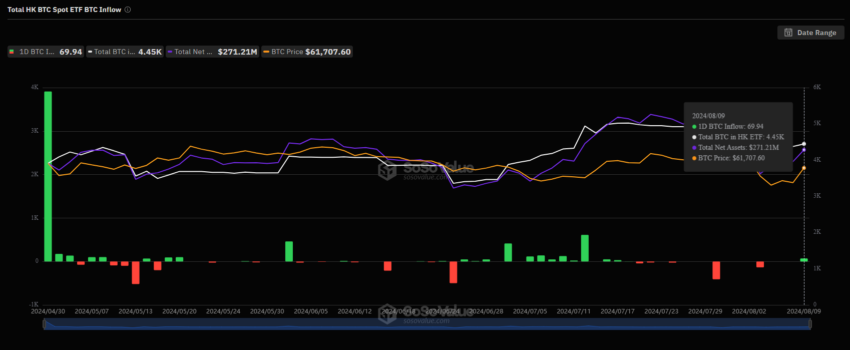
Ethereum-based ETFs in Hong Kong have also experienced similar volatility. On August 8, these ETFs recorded an outflow of 399.09 ETH, followed by an inflow of 1,250 ETH on August 7. Similar to its Bitcoin counterparts, the total net assets of these funds have also declined from their peak.
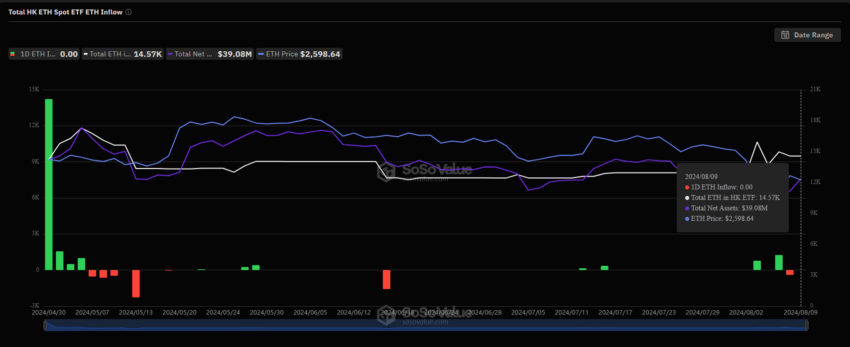
During a panel discussion at the Foresight 2024 conference, Gary Tiu, Executive Director and Head of Regulatory Affairs at OSL, a leading Hong Kong crypto exchange, highlighted systemic issues within the market that hinder the growth of ETFs. Tiu pointed out that the market structure in Hong Kong creates challenges for ETFs to gain traction as financial instruments.
“In Hong Kong, especially when it comes to funds and structured products, typically in between the issuer and the end investors, there is a very rich layer of intermediaries—brokers, banks, private banks, retail banks, et cetera. Those intermediaries make a lot of money from distributing financial products. So, I think the incentive system in Hong Kong is one of the reasons why ETFs do have a bit of a hard time growing as a financial instrument,” Tiu said.
Indonesia’s Roadmap for Crypto Regulation from 2024 to 2028
Indonesia is taking a structured approach to regulating digital assets. The Financial Services Authority (OJK) released a detailed roadmap for 2024-2028. This roadmap outlines the phased development of regulatory frameworks and industry standards aimed at strengthening Indonesia’s position in the Asia crypto industry.
The roadmap’s initial phase focuses on building strong regulatory foundations, while subsequent phases will highlight industry growth and long-term sustainability. Notably, the OJK has also introduced a regulatory sandbox to facilitate innovation within a controlled environment, allowing businesses to test new technologies while ensuring compliance.
In addition to regulatory development, Indonesia is tightening controls on crypto marketing, particularly by influencers. The new rules, which restrict promotional activities to official channels, have sparked debate within the crypto community.
Some crypto influencers have raised their concerns that excessive regulation could stifle innovation. However, the OJK maintains that these measures are necessary to protect investors and ensure market integrity.
Thailand’s Regulatory Sandbox Paves the Way for Digital Asset Innovation
Thailand is also making strides in the Asia crypto sector with the launch of its Digital Asset Regulatory Sandbox. This initiative, led by the Securities and Exchange Commission of Thailand (SEC Thailand), aims to provide a controlled environment for the testing and development digital asset services. By offering a structured framework, the sandbox allows businesses to innovate while adhering to regulatory guidelines, ultimately fostering a more secure and dynamic market.
Participants in the sandbox, including exchanges, brokers, and fund managers, must maintain transparency and solid operational systems. Furthermore, the SEC Thailand has set a clear framework for continuous reporting and risk management, ensuring that the innovation process does not compromise investor protection.
Read more: Crypto Regulation: What Are the Benefits and Drawbacks?
The sandbox is expected to be crucial in expanding the range of digital asset services available to investors in Thailand. Businesses interested in participating can start applying from August 9, with the SEC Thailand evaluating submissions within 60 days. Approved participants will have one year to conduct their tests, possibly extending the period or concluding the experiment early, depending on the outcomes.
Disclaimer
In adherence to the Trust Project guidelines, BeInCrypto is committed to unbiased, transparent reporting. This news article aims to provide accurate, timely information. However, readers are advised to verify facts independently and consult with a professional before making any decisions based on this content. Please note that our Terms and Conditions, Privacy Policy, and Disclaimers have been updated.
Market
Top 3 Made in USA Coins to Watch In April

Made in USA coins continue to try a rebound, with Solana (SOL), RENDER, and Jupiter (JUP) standing out as key names to watch in April. Despite recent price corrections, each of these tokens plays a major role in high-growth areas like DeFi, AI, and blockchain infrastructure.
Solana has seen its price dip, but ecosystem activity remains strong; RENDER is riding the wave of AI demand despite market turbulence; and Jupiter is showing solid usage metrics even as its token struggles. Here’s a closer look at the technical and fundamental setups for each of these standout U.S.-based projects.
Solana (SOL)
Solana has faced a notable price correction over the past week, with its value dropping nearly 13%. If this bearish momentum continues, the token could be on track to retest the critical support level at $120.
A breakdown below that could see SOL sliding further toward the $112 mark.
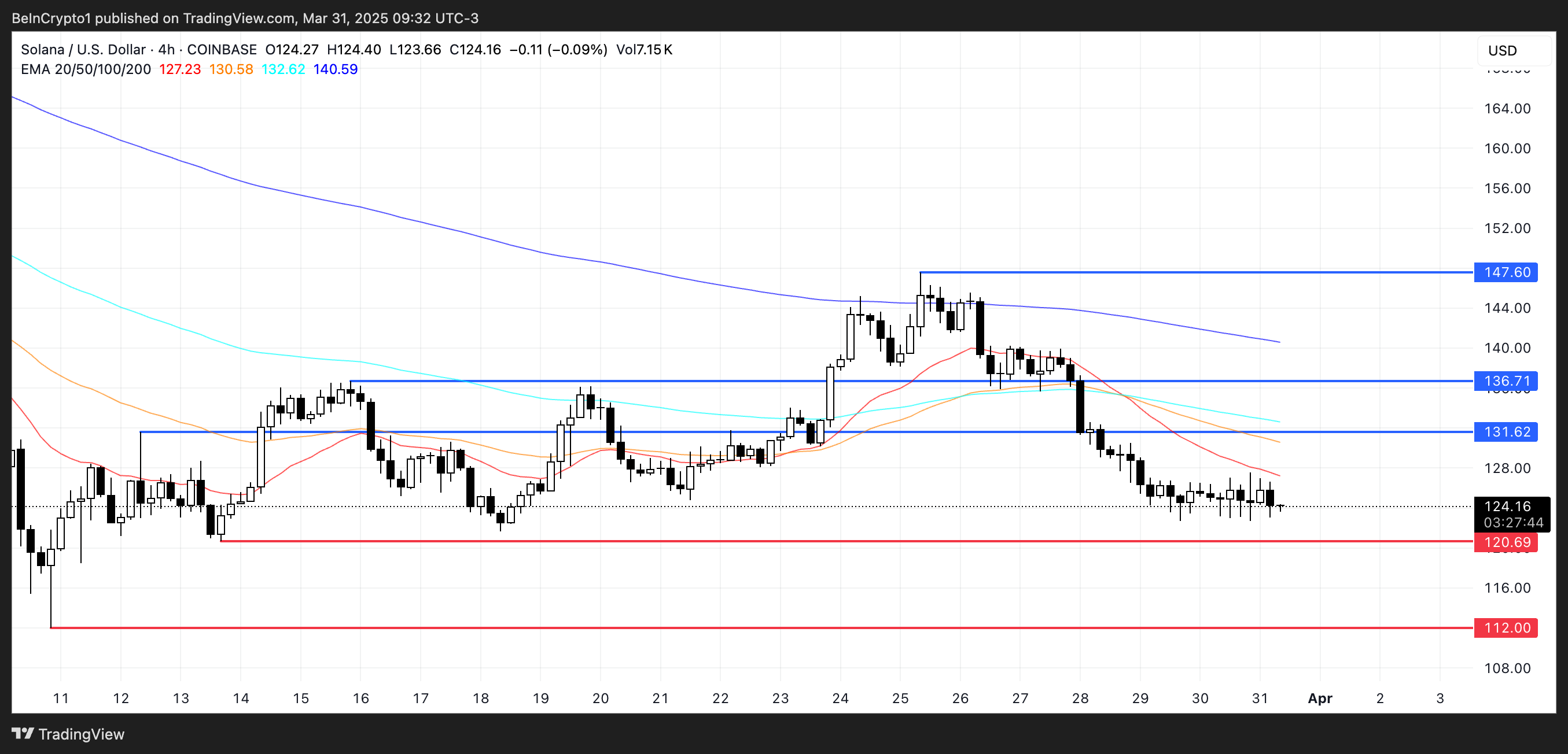
Despite the recent downturn, Solana remains one of the most relevant Made in USA coins and continues to show impressive usage metrics. PumpFun, for example, generated nearly $9 million in revenue over the past 24 hours, second only to Tether.
After a short period when BNB led the DEX volume race, Solana seems to be regaining traction—its decentralized exchange volume has surged by 128% in just seven days, reaching $18 billion and surpassing both Ethereum and BNB.
If this recovery in momentum persists, SOL could target a move toward the $131 resistance level. A successful breakout there could open the door to further gains toward $136 and potentially $147.
RENDER
RENDER, one of the most prominent U.S.-based cryptocurrencies with a focus on artificial intelligence, has seen its price decline nearly 11% over the past seven days.
This drop reflects the broader correction that has impacted many AI-related tokens in recent months.
However, new developments in the AI infrastructure space may provide a catalyst for a potential rebound, especially as the limitations of centralized systems become clear.
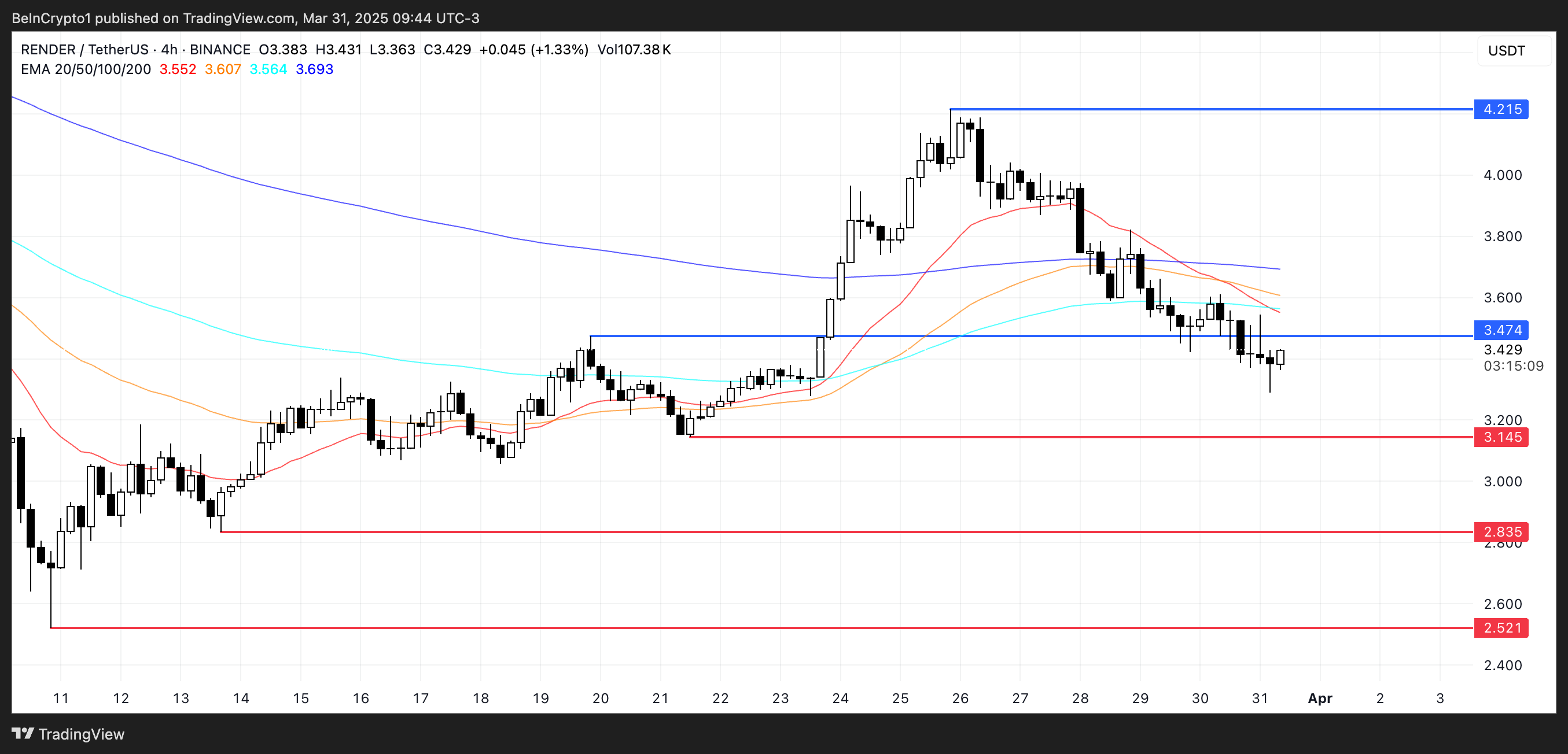
If bullish momentum returns to the AI sector, RENDER could look to challenge the resistance at $3.47, and a successful breakout might open the door for a rally toward $4.21.
However, if the current correction deepens, the token could fall to test the $3.14 support level. A breakdown there may trigger further losses, potentially dragging RENDER down to $2.83 or even $2.52—its lowest level in recent weeks.
Jupiter (JUP)
Despite Solana’s recent struggles, Jupiter—its leading DEX aggregator—is demonstrating impressive strength in terms of activity.
In the last 24 hours, Jupiter ranked as the fourth-highest protocol in crypto by fee generation, collecting nearly $2.5 million.
Only Tether, PumpFun, and Circle managed to outperform it, highlighting the platform’s growing relevance within the Solana ecosystem even during periods of broader market weakness.
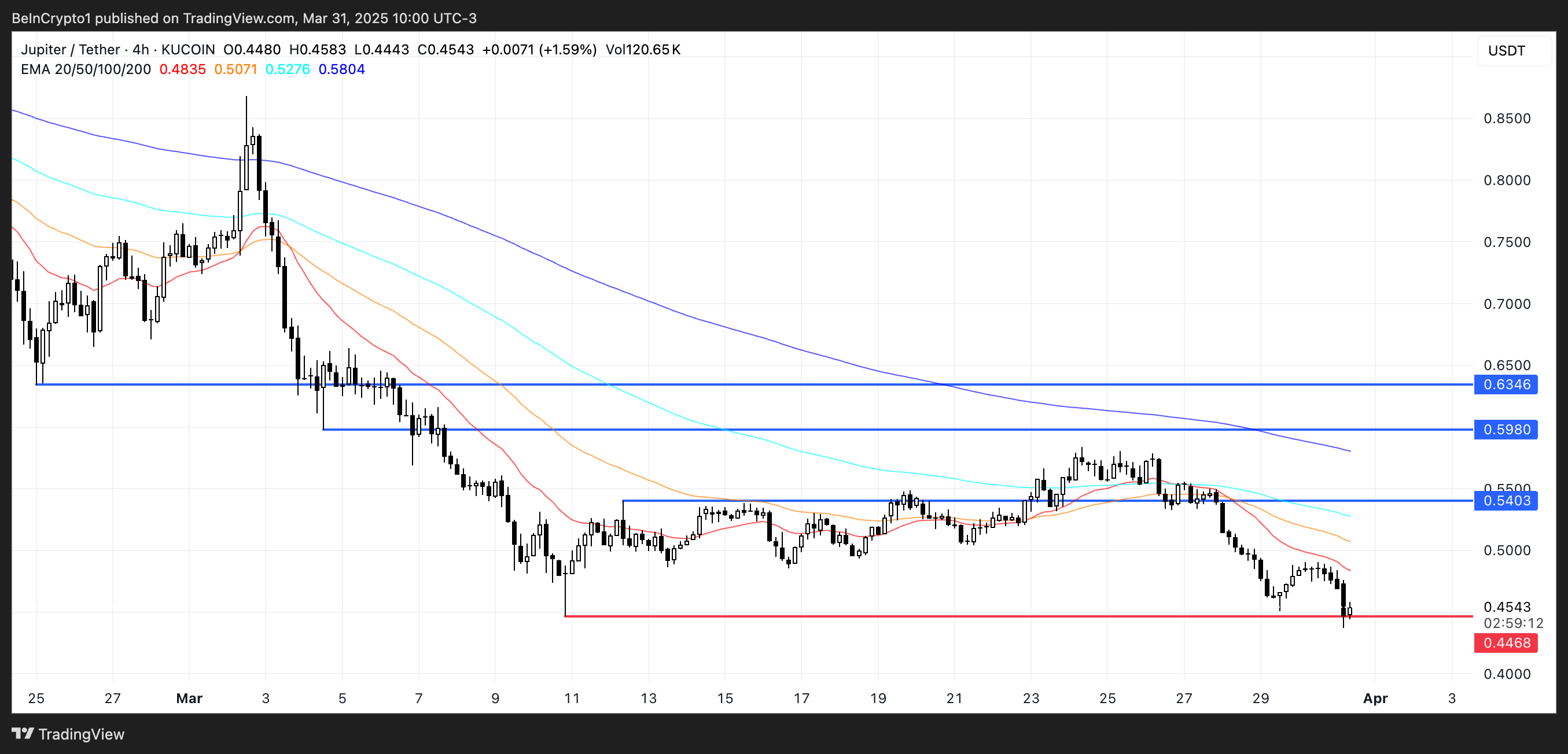
However, JUP, Jupiter’s native token, hasn’t mirrored this positive momentum. Its price has dropped over 21% in the past week, being one of the worst performers among the biggest Made in USA coins. It has remained below the $0.65 mark for three consecutive weeks.
With JUP now hovering dangerously close to a key support at $0.44, a breakdown could see the token dip below $0.40 for the first time ever.
Still, if market sentiment shifts and momentum returns, JUP could begin climbing again—first testing resistance at $0.54, then potentially moving toward $0.598 and even $0.63 if bullish pressure intensifies.
Disclaimer
In line with the Trust Project guidelines, this price analysis article is for informational purposes only and should not be considered financial or investment advice. BeInCrypto is committed to accurate, unbiased reporting, but market conditions are subject to change without notice. Always conduct your own research and consult with a professional before making any financial decisions. Please note that our Terms and Conditions, Privacy Policy, and Disclaimers have been updated.
Market
Cardano (ADA) Whales Hit 2-Year Low as Key Support Retested

Cardano (ADA) is facing mounting pressure as its price corrects by 10% over the past seven days, continuing a broader downtrend that has kept it trading below the $1 mark for nearly a month. With technical indicators flashing warning signs and large holders exiting their positions, concerns around ADA’s short-term stability are growing.
The recent rejection at higher resistance levels and a strong directional trend signal suggest that bearish momentum is far from over. As the $0.64 support level is tested once again, ADA’s next move could determine whether a rebound is possible—or if further downside is ahead.
Cardano ADX Shows The Downtrend Is Very Strong
Cardano’s Average Directional Index (ADX) is currently at 40.19, rising sharply from 15.83 just four days ago. This steep increase suggests a rapid strengthening in the trend’s momentum.
Given that ADA is currently in a downtrend, the rising ADX indicates that bearish momentum is intensifying and the current downward move is gaining traction.

The ADX is a trend strength indicator that measures how strong a trend is, regardless of its direction. It ranges from 0 to 100, with readings below 20 typically indicating a weak or non-existent trend, while values above 25 suggest a strong trend is in place.
Cardano’s ADX climbing above 40 confirms that the current downtrend is active and becoming stronger. If this trend continues, it may point to further downside pressure unless a shift in momentum begins to build from the bulls.
ADA Whales Dropped To Their Lowest Level Since February 2023
The number of Cardano whales—wallets holding between 1 million and 10 million ADA—has dropped to 2,406, down from 2,421 just four days ago.
This decline brings the whale count to its lowest level since February 2023, marking a potentially meaningful shift in large-holder behavior. These movements are worth paying attention to, as changes in whale holdings often precede broader market trends.
Tracking whales is important because these large holders can significantly influence price action through their buying or selling decisions. A decline in whale numbers can signal reduced confidence or capital rotation into other assets.
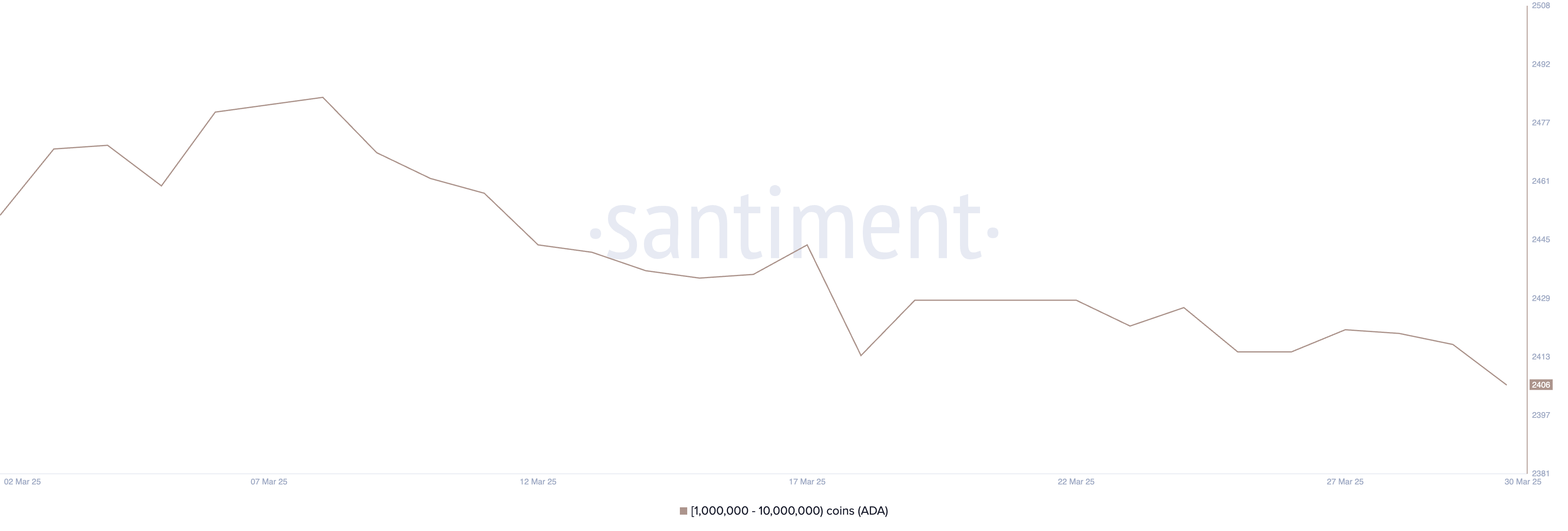
In Cardano’s case, the drop suggests that some major players may be exiting or reducing exposure, which could add downward pressure to ADA’s price.
If this trend continues, it could weaken investor sentiment and make it harder for ADA to recover in the short term.
Can Cardano Sustain The $0.64 Support Again?
Cardano price recently tested the support level at $0.64 and managed to hold, showing that buyers are still defending that zone. This support has become a key line in the sand for ADA’s short-term outlook.
If the current downtrend is reversed and bullish momentum picks up, the next upside target would be the resistance at $0.69. A breakout above that level could open the door for a push toward $0.77.
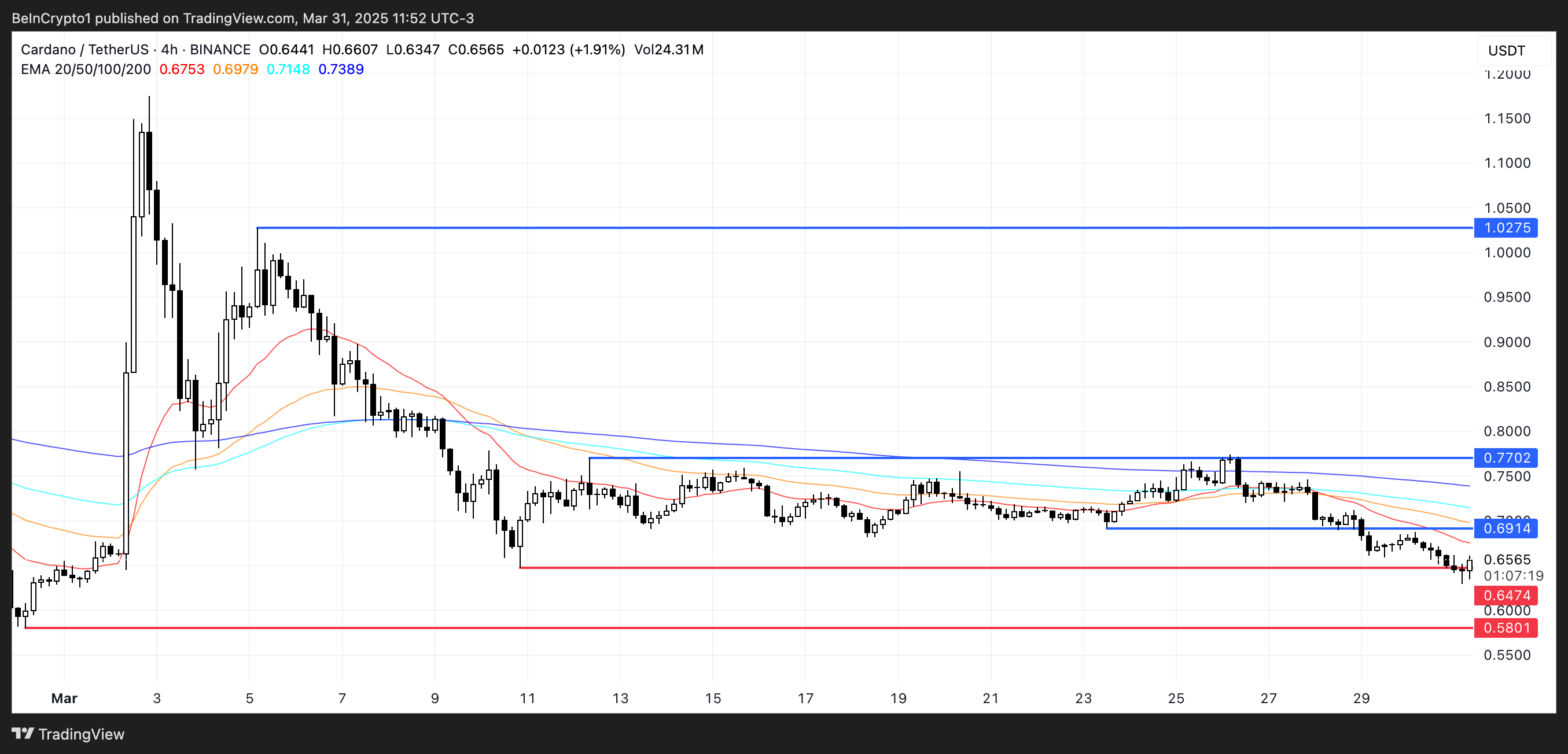
Should the rally continue with strength, ADA could aim for $1.02—marking a return above the $1 level for the first time since early March.
However, the $0.64 support remains a critical level to watch. If Cardano tests it again and fails to hold, it could indicate weakening buyer conviction.
A breakdown below $0.64 would likely send ADA toward the next support at $0.58. This would confirm a continuation of the downtrend and possibly trigger further selling pressure.
Disclaimer
In line with the Trust Project guidelines, this price analysis article is for informational purposes only and should not be considered financial or investment advice. BeInCrypto is committed to accurate, unbiased reporting, but market conditions are subject to change without notice. Always conduct your own research and consult with a professional before making any financial decisions. Please note that our Terms and Conditions, Privacy Policy, and Disclaimers have been updated.
Market
This is Why PumpSwap Brings Pump.fun To the Next Level

Since launching PumpSwap, token launchpad Pump.fun has resumed its position as a top-level protocol by fees and revenue. It saw over $2.62 billion in volume in less than two weeks, signifying high market interest.
Nonetheless, the meme coin sector as a whole has been more volatile than usual lately. PumpSwap is an attractive new option, but it still needs to stand the test of time.
Pump.fun Surges with PumpSwap
Pump.fun, a prominent meme coin creation platform, recently suffered some difficulties in the market. Facing lawsuits and criticism from the industry, the platform’s revenue had been declining in 2025. However, since launching PumpSwap, Pump.fun’s income has rebounded, making it one of the largest protocols by fees and revenue.

PumpSwap is a decentralized exchange on Solana’s blockchain, and it has grown very quickly since its launch less than two weeks ago. It has already managed over $2.62 billion in trade volume, although its daily volume fell over the weekend. Pump.fun’s cofounder spoke highly about PumpSwap, calling it a “crucial step that will help grow the ecosystem.”
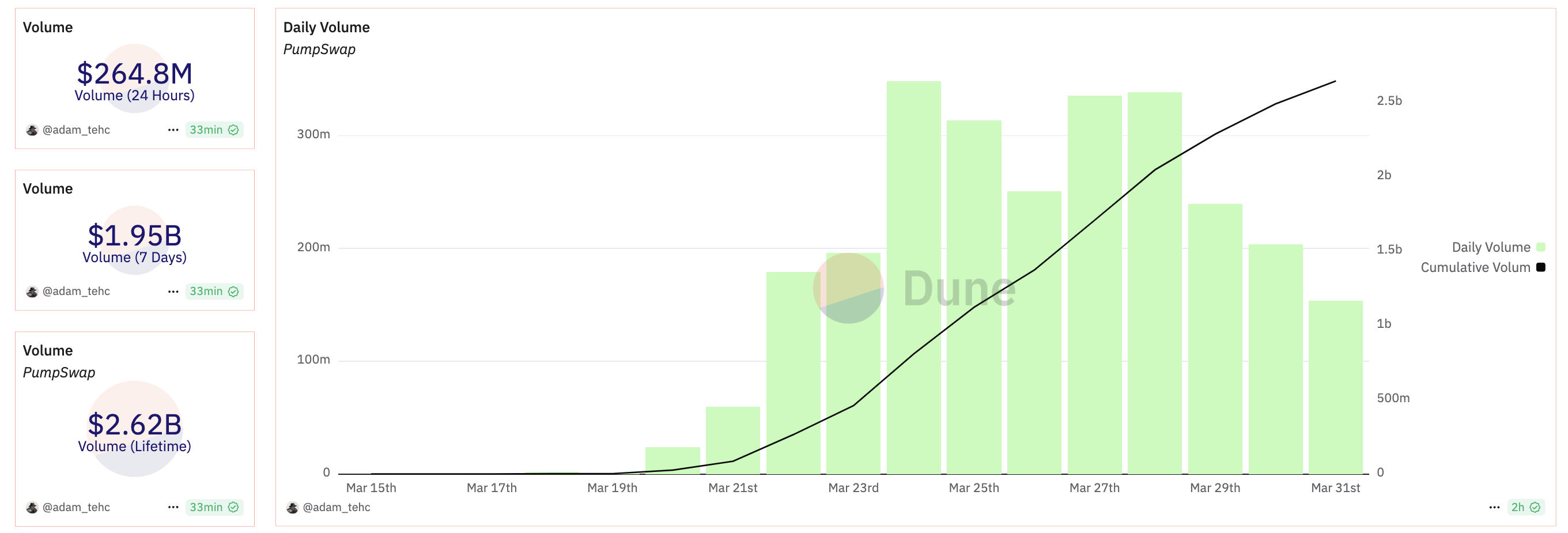
Pump.fun’s overall revenues were declining before it launched PumpSwap, and they have since jumped back up. However, it’s important to not overstate the new exchange’s success. The exchange’s total fees collected have skyrocketed compared to Pump.fun, but the actual revenue growth has been comparatively small.
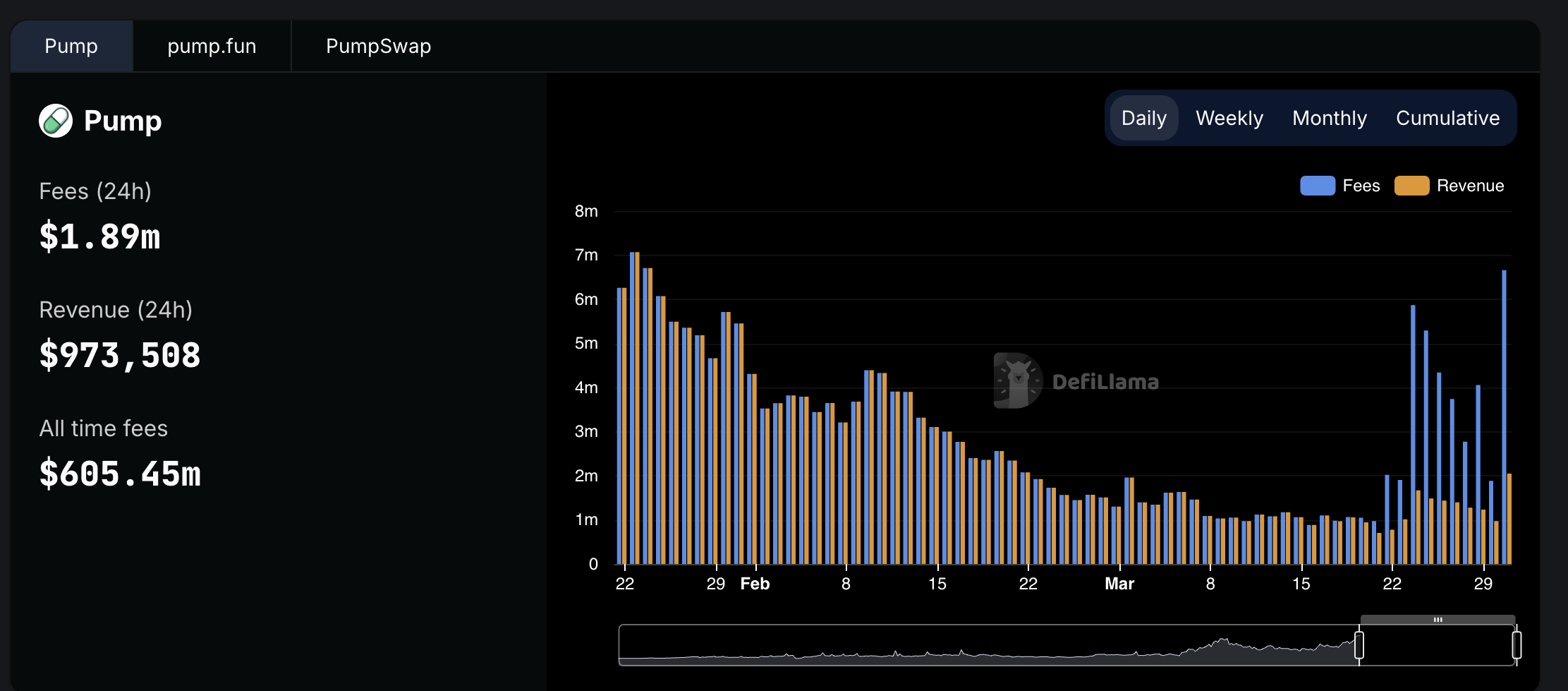
Still, these low fees also have significant advantages. Demand seems to be drying up in the meme coin sector, but Pump.fun faces stiff competition in the form of firms like Raydium, using low fees as a competitive edge. It has also promised things like revenue sharing with token creators to promote ecosystem growth.
Ultimately, the meme coin market as a whole is full of uncertainty. PumpSwap has been able to keep Pump.fun competitive as a top-level platform in this space, giving it a welcome reprieve. The real challenge will come in determining long-term viability.
Disclaimer
In adherence to the Trust Project guidelines, BeInCrypto is committed to unbiased, transparent reporting. This news article aims to provide accurate, timely information. However, readers are advised to verify facts independently and consult with a professional before making any decisions based on this content. Please note that our Terms and Conditions, Privacy Policy, and Disclaimers have been updated.
-

 Market23 hours ago
Market23 hours agoBitcoin Bears Tighten Grip—Where’s the Next Support?
-

 Market22 hours ago
Market22 hours agoEthereum Price Weakens—Can Bulls Prevent a Major Breakdown?
-
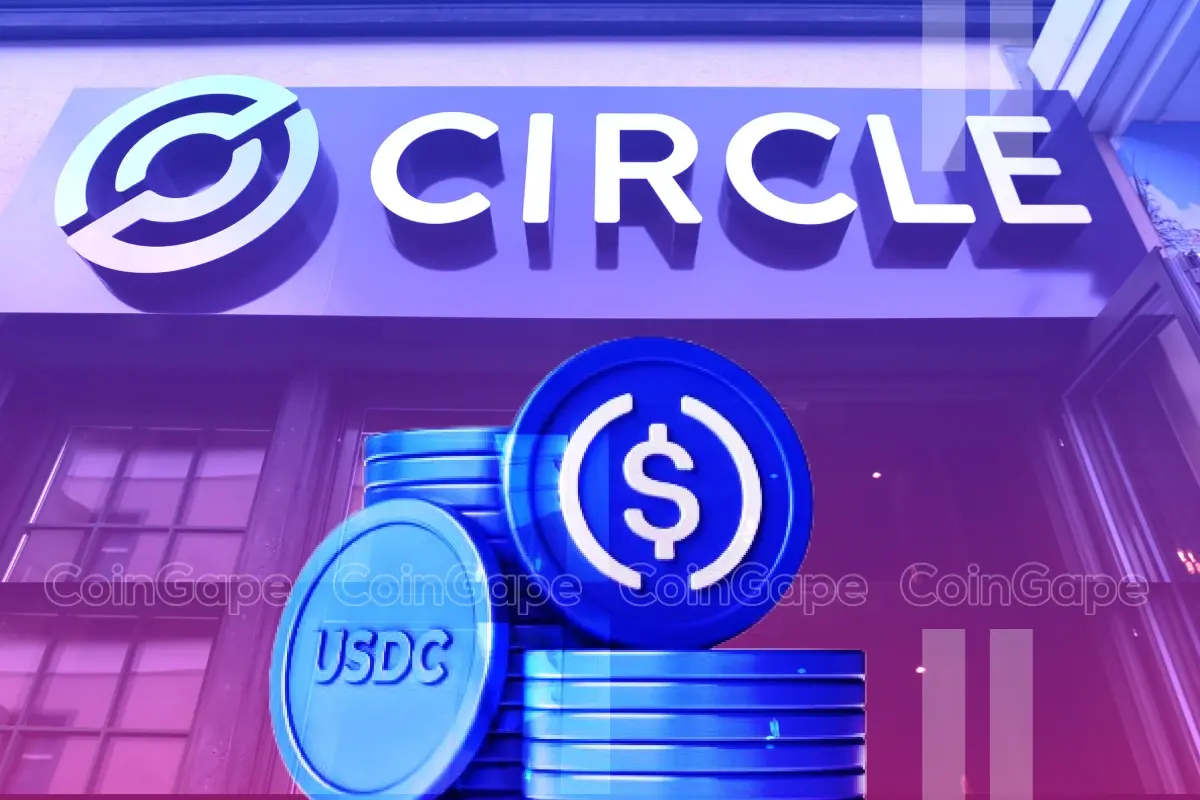
 Regulation11 hours ago
Regulation11 hours agoUSDC Issuer Circle Set To File IPO In April, Here’s All
-

 Bitcoin17 hours ago
Bitcoin17 hours agoUS Macroeconomic Indicators This Week: NFP, JOLTS, & More
-

 Market10 hours ago
Market10 hours agoPi Network Struggles, On Track for New All-Time Low
-

 Market16 hours ago
Market16 hours agoDon’t Fall for These Common Crypto Scams
-

 Ethereum10 hours ago
Ethereum10 hours agoEthereum Price Confirms Breakout From Ascending Triangle, Target Set At $7,800
-
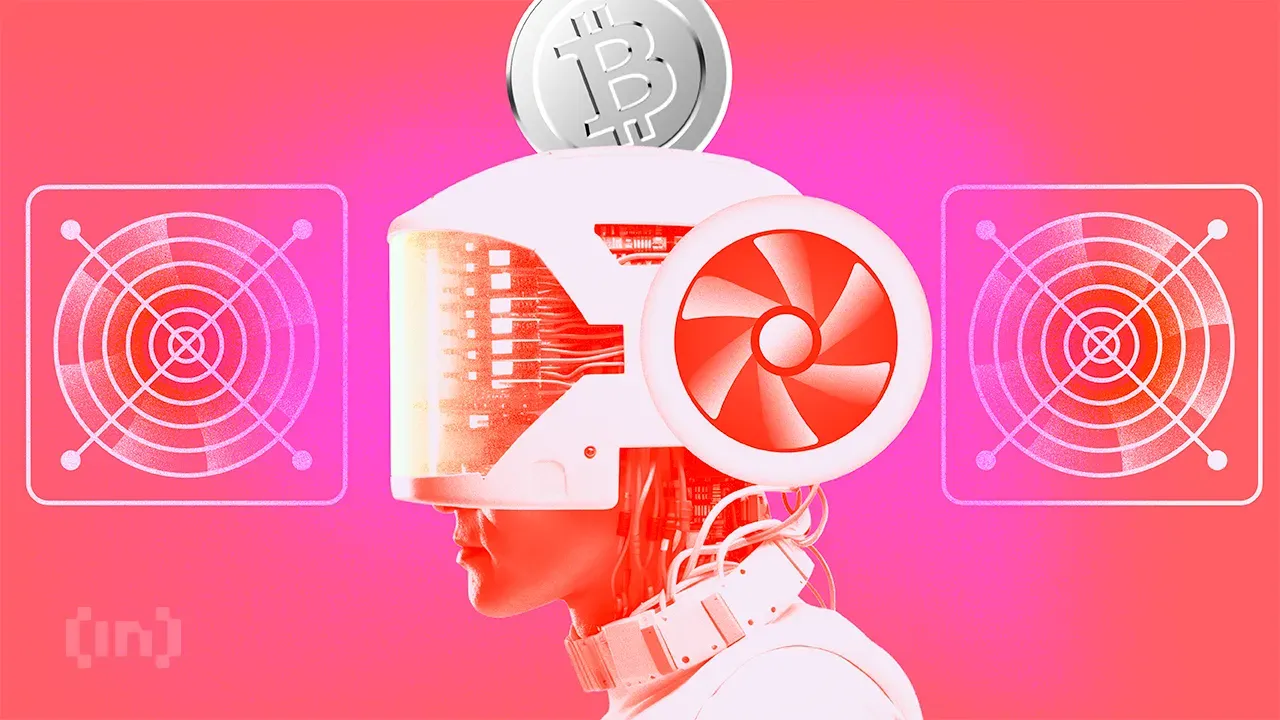
 Bitcoin15 hours ago
Bitcoin15 hours agoMarathon Digital to Sell $2 Billion in Stock to Buy Bitcoin
























